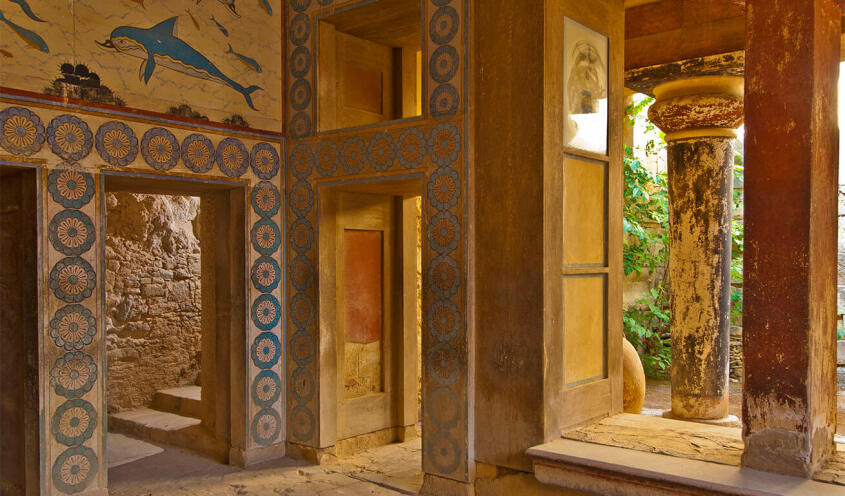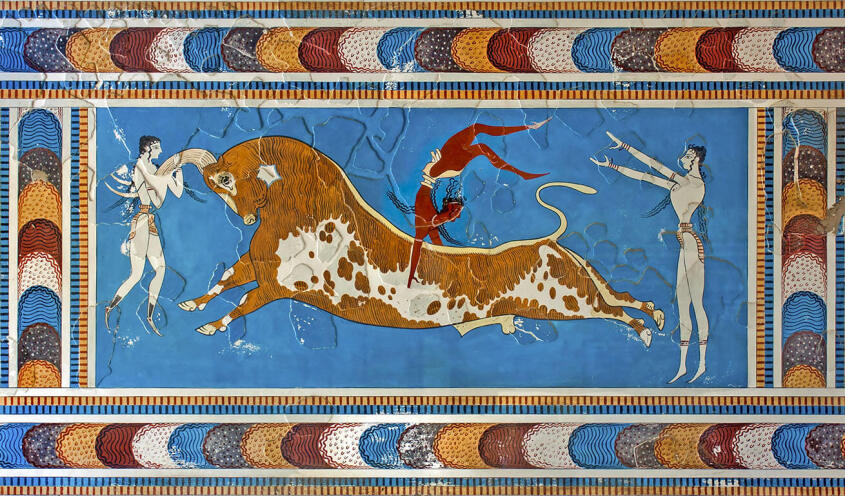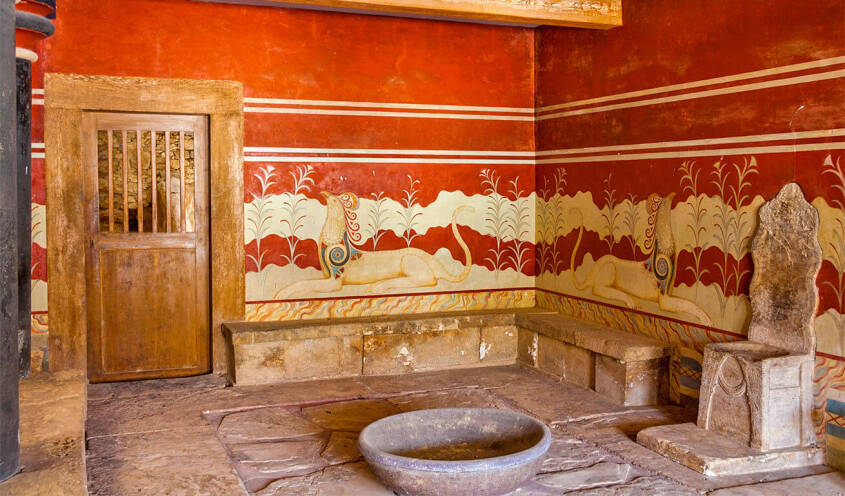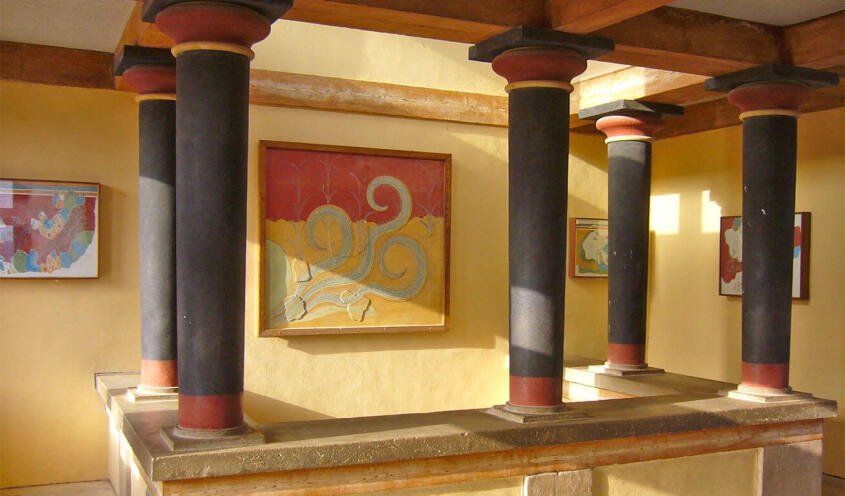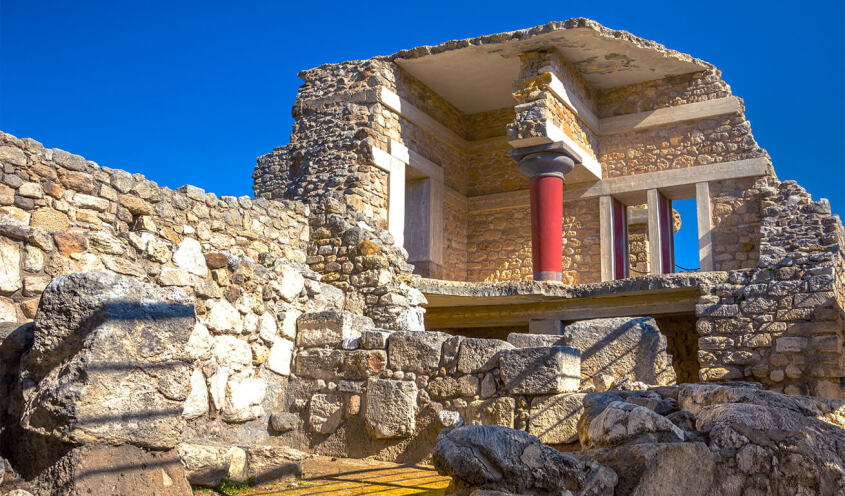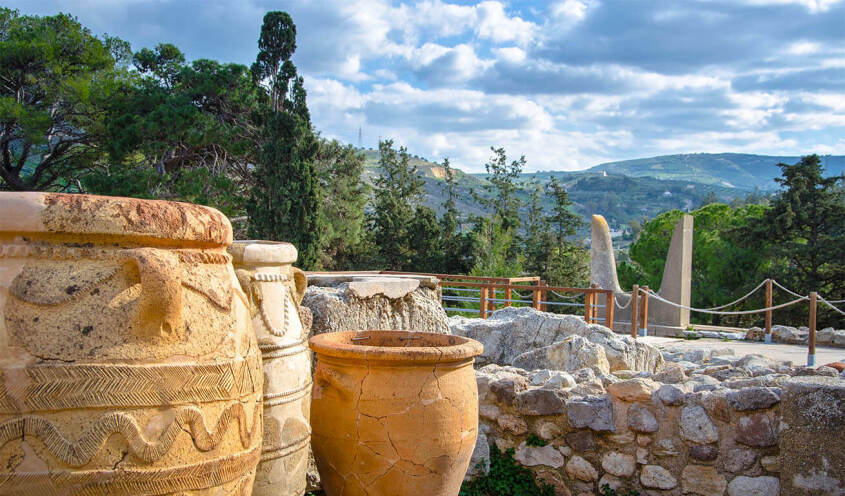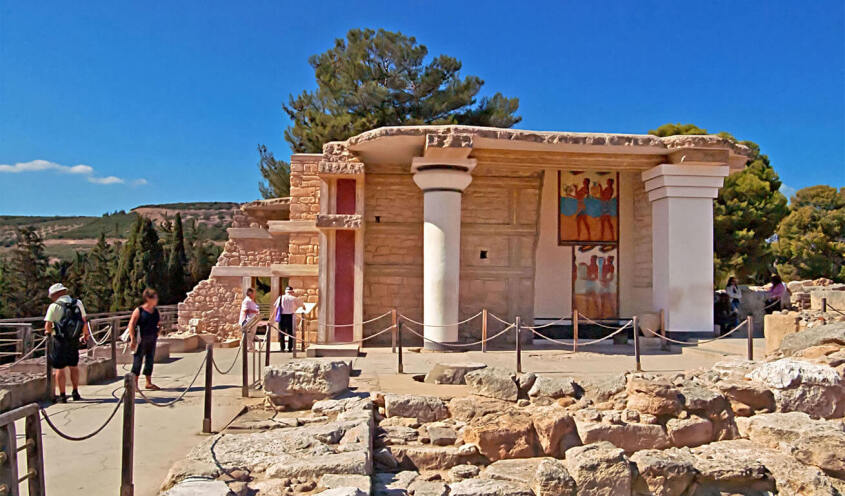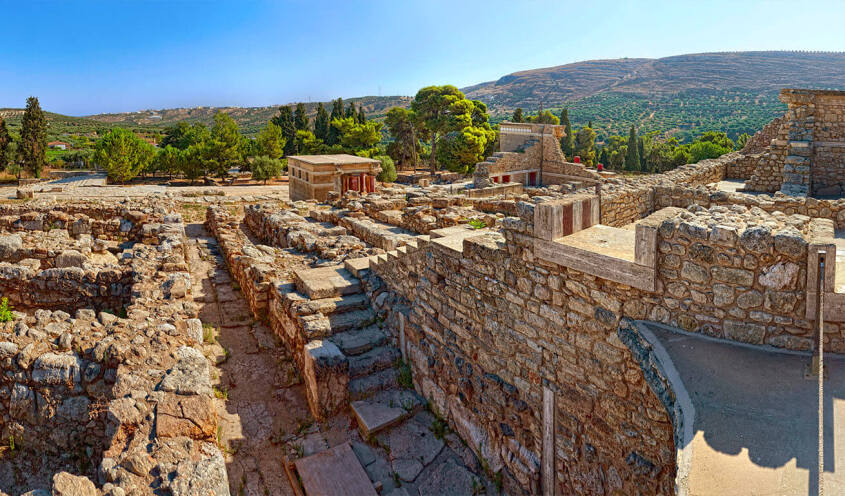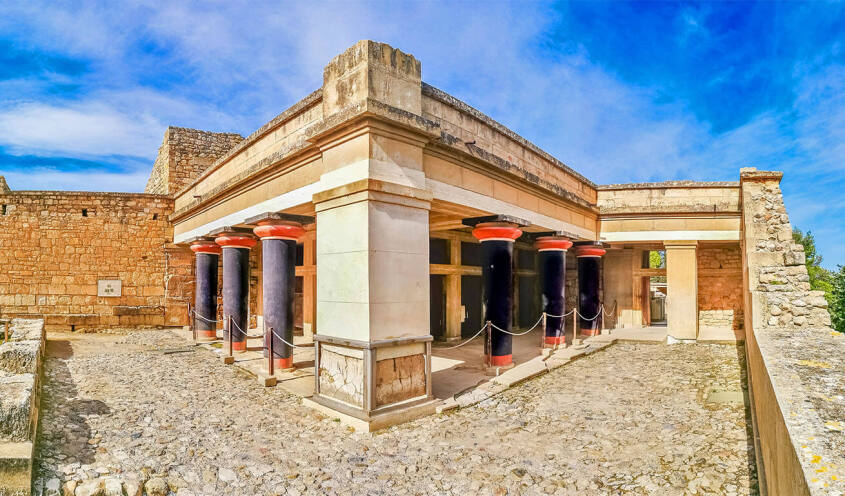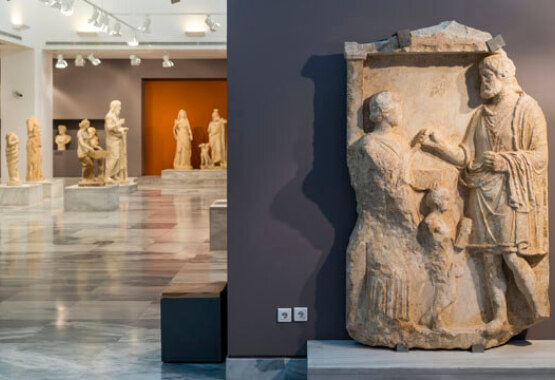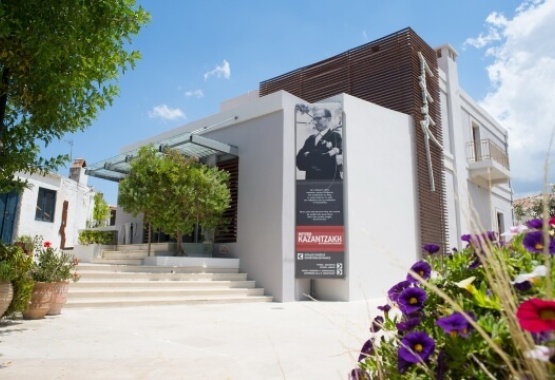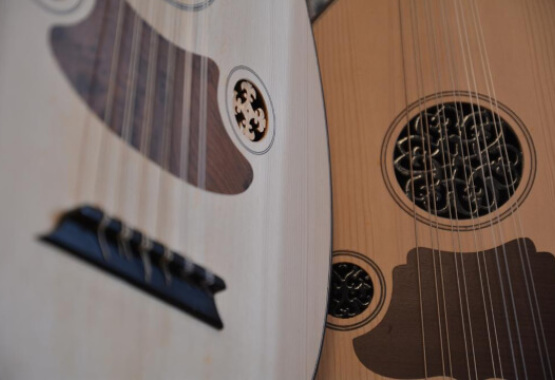
HERAKLION
Knossos was the foremost centre of the Minoan Civilisation, one of the most splendid civilisations in human history. The renowned ancient city with the palace is the largest and most typical archaeological site ever discovered on the island of Crete. It is located at a distance of 6 km SE of Heraklion amidst olive groves, vineyards and cypress forests. According to tradition, the palace was the seat of the legendary King Minos. In addition to serving as the royal residence, it functioned as the administrative and religious hub of the region. The Palace is also connected with thrilling legends, such as the Minotaur and the myth of the Labyrinth, as well as the story of Daedalus and Icarus.
The impressive Minoan palace of Knossos, built in two phases - first around 1900 B.C. and again from 1700-1450 B.C. - covers an area of 22,000 square meters. Visitors enter encounter three main wings. The throne room is situated in the west wing.
The eastern wing houses the royal chambers, the room with double axes, the queen's megaron adorned with the dolphin frescoes, and the workshop areas, notably including the stone carver's workshop. It also contains the storage rooms. The northern entrance features a customs house with columns and pillars. To the northwest of the palace, outside its bounds, are the lustral basin, the theatre and the royal road leading to the smaller palace. Northeast of the main palace you can explore the royal villa, and about 1 km further south lies the royal tomb.
The first systematic excavation at Knossos was carried out in 1878 by Minos Kalokerinos, a devoted antiquarian. However, it was Sir Arthur Evans who had the fortune of discovering the Palace. Evans, an Englishman, arrived at Knossos in 1894, and excavation works began soon after Crete gained independence in 1900. This work, which continued with several interruptions for 35 years, was conducted by Evans himself and his associates.
The Palace of Knossos
The Minoan palace of colours!
The impressive Minoan palace of Knossos, built in two phases - first around 1900 B.C. and again from 1700-1450 B.C. - covers an area of 22,000 square meters. Visitors enter encounter three main wings. The throne room is situated in the west wing.
The eastern wing houses the royal chambers, the room with double axes, the queen's megaron adorned with the dolphin frescoes, and the workshop areas, notably including the stone carver's workshop. It also contains the storage rooms. The northern entrance features a customs house with columns and pillars. To the northwest of the palace, outside its bounds, are the lustral basin, the theatre and the royal road leading to the smaller palace. Northeast of the main palace you can explore the royal villa, and about 1 km further south lies the royal tomb.
The first systematic excavation at Knossos was carried out in 1878 by Minos Kalokerinos, a devoted antiquarian. However, it was Sir Arthur Evans who had the fortune of discovering the Palace. Evans, an Englishman, arrived at Knossos in 1894, and excavation works began soon after Crete gained independence in 1900. This work, which continued with several interruptions for 35 years, was conducted by Evans himself and his associates.
